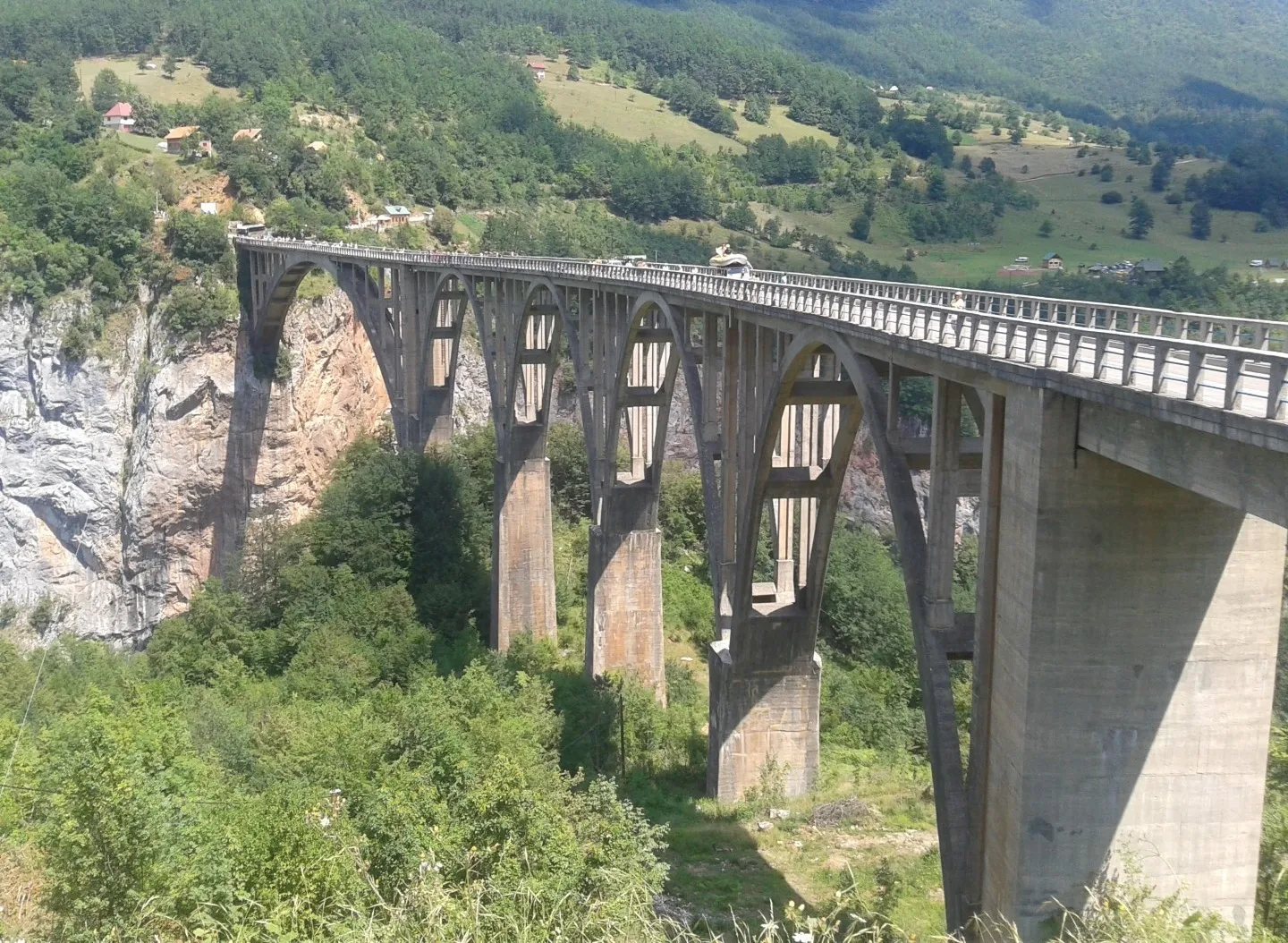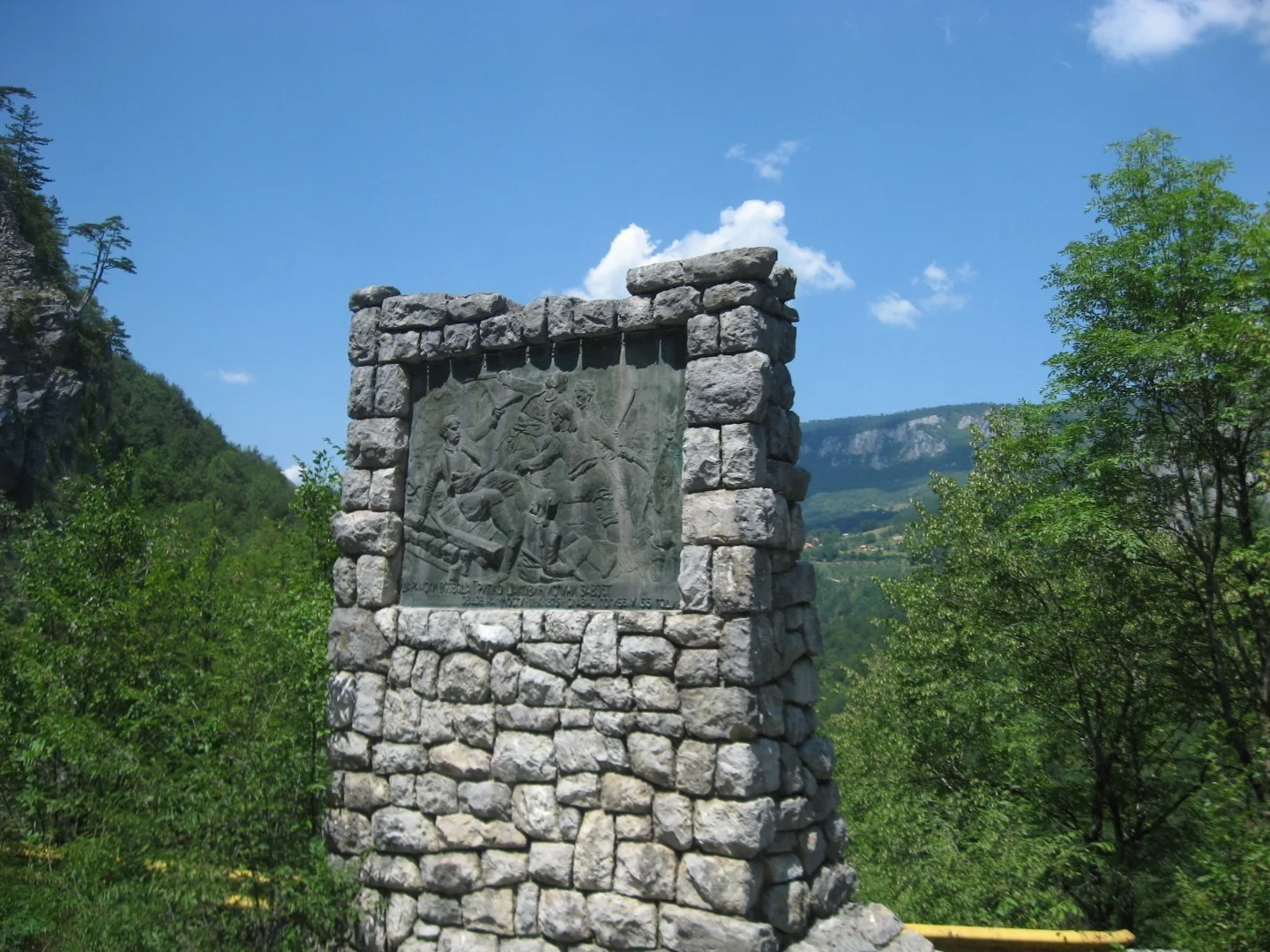 |
The Durdevica Tara Bridge is one of the most memorable sights of Montenegro. It offers simply fantastic views of the surrounding mountains and the Tara River canyon.
The nature in these places is simply amazing. We have not seen such beauty anywhere else. High mountains covered with dense forests, small valleys, and a mighty river somewhere far below.
 |
| Durdevica Tara Bridge |
And literally nearby on a zip-line (bungee, if simple), tourists fly by, somewhere below people enjoy rafting and sailing along the great river. This pleasure costs 10 or 20 euros, depending on the bungee. There is also a small souvenir market nearby, although the prices are quite high there. On the other hand, unusual, unique things also sometimes come across.
Getting to the Durdevica Tara Bridge on your own is rather difficult and not very profitable - a rented car and spent gasoline will cost you quite a lot, maybe even more expensive than a simple excursion. And if you also take into account that the roads in Montenegro are very difficult, twisted by simply unrealistic serpentines, it is much easier to choose an excursion.
Alternatively, you can consider an individual excursion with a private guide to these places, but it will be expensive.
 |
| Durdevica Tara Bridge |
We recommend visiting this place without fail. In our opinion, this is one of the most beautiful corners of the country, which we remember for many years. In general, if you have already arrived in Montenegro, be sure to add the Durdevica Tara Bridge to the list of what you just need to see.
You may be interested in a selection of beautiful photographs of Montenegro or an article with a list of the most important attractions in the country.
 |
| Durdevica Tara Bridge |
If you evaluate only numbers, the bridge does not seem very high: only 172 meters above the Tara River. But when you stand there, it seems that there are several kilometers under you. The scenery just makes your head spin. Wherever you look, around the mountains and the mighty river Tara.
Durdevica Tara Bridge. Main characteristics
Until recently, the Durdevica Tara Bridge was considered the largest automobile arch bridge in Europe.
Dimensions of the Durdevica Tara Bridge
Length: 365 meters;
Height: 172 meters;
Number of arches: 5;
The length of the large span: is 116 meters.
The bridge is not straight. It is slightly curved.
There is practically no separate pedestrian zone on the bridge; tourists walk directly along the roadbed.
The history of the Durdevica Tara Bridge
This huge Đurđevića Tara Bridge was built in just three years: from 1937 to 1940. It is difficult even to imagine the titanic work that was invested in it. Not without human sacrifice. Workers often neglected safety measures - several people fell into the abyss of the canyon.
Two years after the opening of the bridge, it had to be destroyed. The Nazis captured the territory of Montenegro. The mountainous terrain, the vast military experience of the Montenegrin people, and the knowledge of their native land helped the partisans.
 |
| Durdevica Tara Bridge |
In 1942, when the Italians approached the bridge, it was decided to blow it up. In order not to completely destroy the Durdevica Tara Bridge, one of the engineers who built the bridge (Lazar Jaukovic) developed a plan to undermine the central arch of the bridge (so that after the war the bridge could be restored).
The operation was successful. The only bridge in the vicinity over the Tara River was destroyed, and the Nazis stopped.
Engineer Lazar Yaukovich was out of luck. They specifically searched for him, found and shot him right on the bridge.
 |
| Durdevica Tara Bridge |
After the war (1946), the Durdevica Tara Bridge was quickly restored, and a monument to Lazar Yaukovich was erected here. Even now it is noticeable that one arch is noticeably lighter.
Paradoxical as it may seem, the Durdevica Tara Bridge is named not in honor of the heroically deceased creator, but in the name of a rich farmer who once lived in these places. He offered jobs to local residents and always paid them honestly. Now the bridge is named after him and the name of the Tara River, over which it was built.
